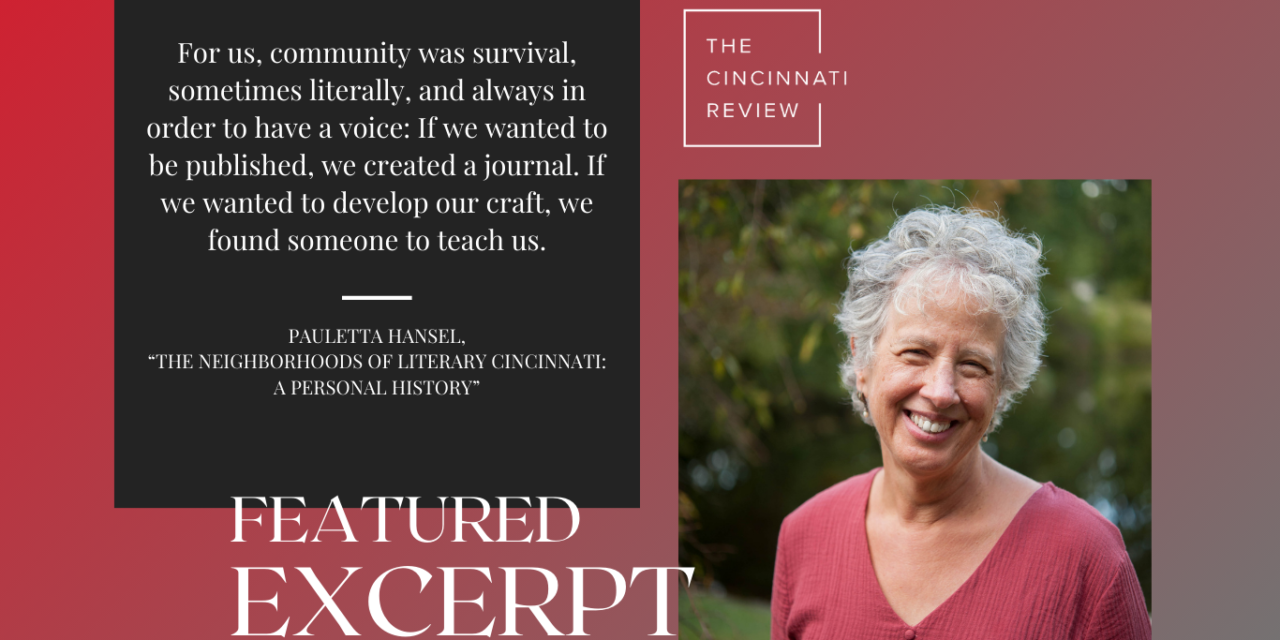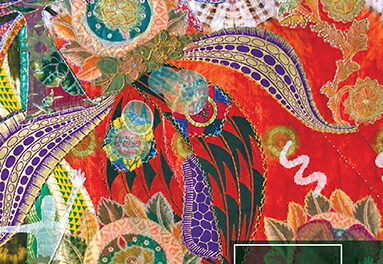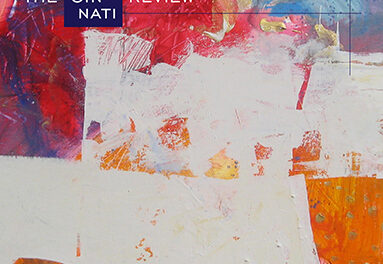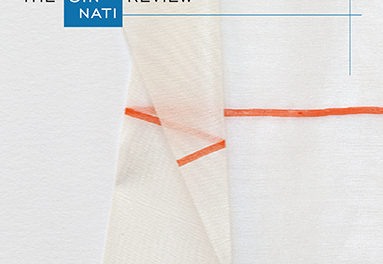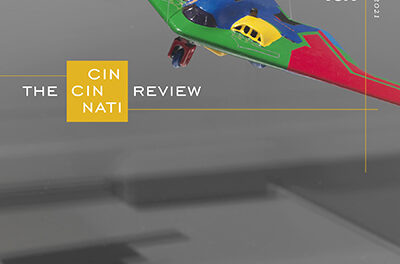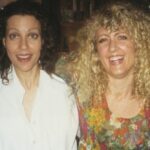In Issue 20.2, one of our twentieth-anniversary issues, we present a special feature on where writing lives in Cincinnati. We reached out to six writers who are current or former residents of the city, giving them the following prompt:
We’ve been thinking about Cincinnati as the site of intersections: of North and South, with the subversive crossing between them by the Underground Railroad; of the geography shaped by an advancing and then retreating glacier, the Ohio River, and the hills; of the Indigenous Algonquian speaking tribes, including the Delaware, Miami, and Shawnee tribes, whose land was taken by white settlers as it became known as Losantiville in 1888. We’re interested, also, in thinking about how the diverse strands of our literary community intersect (or not) here in Cincinnati. Though our various groups focused on creative writing have sometimes felt like separate silos, the Cincinnati Poet Laureate position, the Cincinnati and Hamilton County Public Library writer-in-residence program, and other initiatives like it are breaking down those divisions at times. What is the story of Cincinnati and its literature(s), from your point of view? Where does writing “live” here?
We’re pleased to share here Pauletta Hansel’s contribution to the conversation. (Read the entire feature here.)
I first saw Cincinnati’s skyline in 1979. I had taken the Greyhound from Beckley, West Virginia, where I’d gone to college, to be interviewed for a spot in Xavier University’s graduate Montessori program. As the driver rounded the Cut in the Hill, the city splayed out before me. My future. Maybe even my destiny. (At twenty years old I was prone to such hyperbole.) I had grown up in small towns in southeastern Kentucky, never with more than a few thousand people. When I moved here, I didn’t understand that Cincinnati was not just one town, but many. It makes sense, too, to talk about “the literary community” in Cincinnati, the various groupings of poets and writers, not as a singular entity but as “neighborhoods.” While there are benefits to such divisions, just like there are for geographic neighborhoods—a sense of belonging, or awareness of each person’s necessity to the group’s well-being—there can be serious drawbacks: racial segregation, unequal resources, and isolation from power.
With the pressures of graduate school and the pull back toward my Appalachian writing community, I didn’t make connections in the city until the early ’80s. Richard Hague, who has his feet in both Cincinnati and Appalachia, was my entry point. Dick came to the area in the ’60s as an undergrad. He attended Xavier University and was part of its Mermaid Tavern writers’ group, along with a few other Cincinnati literary luminaries including Michael Henson and the late Joseph Enzweiler. As far as I can tell, the only Cincinnati literary organizations that predate Dick are the men’s-only Cincinnati Literary Club, of which he is a member, and the Greater Cincinnati Writers League, founded in the 1930s and still a hub for poets looking for feedback on new work.
Dick Hague went on to teach at Purcell Marian High School and while there began a series of writing workshops held in his home for both teens and adults. He remembers the scene in the late ’70s and ’80s as being very grassroots, “front-room stuff,” as he calls it, taking place in parlors and dining rooms. At that time, too, the Cincinnati Recreation Commission actively supported local writers. I helped judge their Neighborhood Poet Laureate Contest, and the commission also mailed (with a stamp and everything) a mimeographed newsletter called Rough Draft promoting open submissions, readings, and workshops. The brick building where Ravine, McMillan, and Fairview intersect (now housing the Freedom Tattoo Parlor) was the Fairview Arts Center, a CRC-run hub for readings attended by a wide swath of writers.
The Center’s proximity to the University of Cincinnati was likely no accident. But in my experience, there has been very little interaction between town and gown, and Dick Hague confirms that’s been the case during his fifty years living and writing in Cincinnati. It has not always been easy to find out about events on campus, and in the plethora of readings around town—even those in UC’s Clifton neighborhood—students and faculty have tended to be scarce.
This separation was not always so extreme. In the early 1970s there was a narrowing of the gap thanks to the work of UC poets/professors Jim Bertolino and Dallas Wiebe. In a 2007 interview in the Cortland Review, Bertolino outlined his community-based work in Cincinnati, including cofounding the Cincinnati Poetry Review and the Cincinnati Area Poetry Project. CAAP sponsored publications and readings with funding from the Ohio Arts Council and the federal CETA program (Comprehensive Employment and Training Act of 1973), which supported “writers and artists who were at risk of not making a living,” Bertolino says. In fact, Dick Hague’s first chapbook was published by CAAP.
Dallas Wiebe, the other founder of the Cincinnati Poetry Review, was also instrumental in a second wave of gap-bridging in the ’80s, this time with his UC colleagues Terry Stokes and Austin Wright, and a young UC grad/College of Mount St. Joseph faculty member, Jeff Hillard. Jeff told me that Wiebe once asked him how many poets outside UC he knew, and between them they managed to get beyond only one hand’s worth of fingers. The Cincinnati Writers Project (“celebrating local writers since 1987”), an independent nonprofit, grew out of this assessment. Jeff said its academic founders had no interest in involving the universities or their writers, who had access to plenty of resources; instead, they wanted to provide community writers information about the world of publishers, editors, and agents, much more difficult to access in the predigital age. They met monthly, held a small-press bookfair, brought in established writers as speakers, and encouraged members to give back in various ways, including serving as tutors in the literacy center that hosted them. The CWP still exists, though it switched to a workshopping focus when Hillard and Wiebe handed it over to members including Jerry Judge, Karen George, and the late Carol Feiser Laque, a retired UC professor of poetry and comparative literature who was herself a force in the literary scene.
I’ve been here a long time, so I’ve seen literary neighborhoods come and go, change and be changed. Dick Hague told me that most of his experience with writing communities is that they have “grown from the ground up, rather than been passed down from the academy.” I agree, but I’ve also seen that the growth is usually seeded by just one or two people, and when those people leave or change focus, what they have created often does not survive. Cincinnati’s two most recent attempts to form unified writing organizations, InkTank and Chase Public, did not outlive their founders’ departures. Things only last when the ground is consistently tended, over time, and as Dick Hague puts it, in a place where a “tradition” of writing and community has been established.
Yet anyone who has ever tried to eradicate grass knows that those roots are tenacious. Luckily, there has been a continuing stream of folks willing to water the various lawns. Jim Palmarini arrived in Cincinnati in 1986, having cut his poetic teeth at Kent State University in the ’70s. Then, the poetry scenes in Kent and Cincinnati organized themselves in similar ways, right down to the role of CETA. But in Kent there is still a direct through-line from the early academic/community partnerships to what is happening now, including the tradition of an off-campus reading series; the annual Jawbone Poetry Festival, now in its thirty-fifth year; and KSU’s Wick Poetry Center, which is active in community poetry programming throughout northern Ohio.
Jim said, “When I looked around and saw there was not a poetry scene in Cincinnati, it just meant I was going to make one.” And he has. Jim rattled off the list of places he has hosted reading series, starting with a collaboration with Aralee Strange at Case Gallery, and then on to many others, as detailed in his poem in this section. When Strange died in 2013, Jim and writer Mark Flanigan started a new series in her honor, Word of Mouth Cincinnati, named after her Athens, Georgia, series. Held at MOTR Pub, this is now Cincinnati’s longest running feature/open mic; Jim and Mark have made ongoing and conscious efforts at inclusiveness and often choose those who perform in the open-mic portion for featured-reader positions later. Jim told me, “The wonderful thing about the poetry scene here is that it is rich and varied, crossing communities and perspectives that are fully relevant to our times. On the flip side, it seems very partitioned off by a delineation of opinions about what’s poetry and what’s not.”
Among these partitions can be spoken word versus what some call “page poetry.” MoPoetry Phillips and Kim “DuWaup” Bolden, two dynamic women of color from the spoken-word tradition, are instrumental in the vibrancy of today’s lit scene. The longstanding DuWaup’s Poetry Slam showcases local and national touring artists. DuWaup also manages the poetry program at Elementz, a youth-oriented cultural arts center. MoPoetry cofounded Regal Rhythms Poetry, which runs Hit the Mic Cincy and provides teaching and performing poets for clients including Juneteenth Cincinnati, school systems, and businesses like Procter & Gamble and Fifth Third Bank. Through Cincinnati Playhouse in the Park, DuWaup’s Bold Creative Solutions has offered a workshop series on the business of being an artist, not unlike those early CETA-funded activities designed to help artists earn livings.
DuWaup and MoPoetry discussed with me how the various poetry communities in Cincinnati do and do not intersect. Both women were emphatic that while “like may attract like,” we have to create shared spaces, especially in what can be a racially divided literary scene. DuWaup said, “The biases we have exist, so we might as well recognize them for what they are, but still extend ourselves to others so that we do feel like we can be included if we want to be. I have to feel welcome into your space, you have to feel welcome into my space. Culturally, [my slam’s] a black thing, I won’t pretend it’s not—but if you look around at the people participating, you will see how it is made up of different cultures and different races.” DuWaup is interested in developing artistic connections across generations; she pointed out that sometimes “welcome” means an actual invitation. MoPoetry doesn’t wait for that; she is always looking for ways to work with people who are different from her, purposefully going into situations where she is not expected to show up—taking spoken word into poetry readings and reading from her book at slams. “Iron sharpens iron,” she says. “Go where you feel like you are appreciated and go where you are not.”
Ellen Austin-Li fell in love with poetry as a student at Women Writing for (a) Change around 2010. Founded in 1991 by Mary Pierce Brosmer as a feminist alternative to academic writing programs, WWf(a)C has provided programs for thousands of writers—including me over a decade before Ellen, and MoPoetry Phillips a few years after her. The second community for Ellen formed at Rohs Street Café in Clifton Heights, not far from the old Fairview Arts Center. Ellen told me that this young, racially integrated, and welcoming open-mic group made her aware that there were “pockets of poets” throughout the city, often working in isolation from each other but happy to come together when called. Now it is Ellen who does the calling; since 2018 she has cohosted a reading series at Sitwell’s Coffeehouse in Clifton. She chooses her mix of featured readers to highlight a multiplicity of styles and affiliations; the open-mic crowd reflects this too and even has recently included some undergraduate and graduate creative writing students.
While the early efforts by UC faculty members didn’t became a lasting tradition, UC’s branch colleges in Blue Ash and Clermont County have been more consistent in engagement, as has Mount St. Joe, where Jeff Hillard taught a Cincinnati Authors class until his retirement. Cincinnati State was the only university to host events during my term as the first Poet Laureate of Cincinnati (2016–2018). Recently, Xavier University invited local writers as audience to a poetry symposium in its new Humanities Reading Room, and across the river, Northern Kentucky University has drawn from its locally based creative writing students and alumni for on- and off-campus readings. Thomas More University, just west of NKU, has a tradition of literary partnerships, primarily spearheaded by Sherry Cook Stanforth, who told me that she hopes to “teach what it means to be part of a supportive literary community.” Though she recently left to devote time to her new Originary Arts Initiative, her Creative Writing Vision Program at Thomas More served student and regional writers and included community-based writers-in-residence.
Which brings us to UC’s current efforts to bridge the gown/town divide. The Elliston Poetry Room is a collection established in 1946 and endowed by George Elliston, the newspaperwoman and poetry philanthropist, once a charter member of the Greater Cincinnati Writers League. Community engagement is actually part of Curator Michael Peterson’s job description. He and graduate assistant Maia Morgan have developed partnerships that take university resources out to places as varied as parks, prisons, schools, and even Spring Grove Cemetery. Their work to bring regional poets on campus—not just as audience but as guest curators (Cincinnati Youth Poet Laureate Rimel Kamran is building its Pakistani poetry collection, for example) and as readers—is another transformation: Peterson and Langsam Library’s Ben Kline and Melissa Cox Norris are working together on a quarterly series called Poetry Stacked, at which a poet on UC’s faculty or staff, a UC student, and a regional poet share the mic in the stacks of Langsam, with pre- and post-events hosted by the Elliston Room.
Poet Jerry Judge, active since the ’90s in both the Cincinnati Writers Project and the Greater Cincinnati Writers League, told me that the local poetry scene has never been as alive as it is now. He credited, in part, the work of many I have mentioned here, and some I have not, including the abundance of small presses, bookstores, and libraries. Jerry says the key ingredient is the mutual support and lack of competition among us. I can’t help but wonder if disinterest from “the academy” has been beneficial to this self-sustaining ecosystem, and so I am encouraged to note the grassroots and egalitarian tenor of these new UC projects. Poet Ben Kline is quick to point out that he is staff, not faculty. Like me, Kline grew up in a small Appalachian town and went to college in West Virginia. He was similarly taken aback by all the “neighborhood” allegiances when he arrived here in 1999. Poetry Stacked might be considered an offshoot of his Poetry Afield Series, which started in 2018 at a local bar because he wanted to host a big raucous poetry party, with an emphasis on poetry as storytelling. Michael Peterson, who came to Cincinnati as a student in its creative writing doctoral program, says, “This is a poets’ town. You can’t throw a rock without hitting another poet.” He sees part of the Elliston Poetry Room’s mission as seeking out connections to this wide-ranging community, always asking himself, “Is this what George would have wanted?”
Maybe I don’t know every poet in town, but I am not more than a degree of separation from most. I do believe this is, in part, my small-town Appalachian roots showing. And those Appalachian roots—not just mine, but those of Richard Hague, MoPoetry Phillips, Mary Pierce Brosmer, Sherry Cook Stanforth, Ben Kline, and more—may have something to do with how our literary community continues to evolve. Cincinnati is not within the Appalachian region but is a migrant center. I had not planned to mention our urban Appalachian writing scene, but the topic kept coming up in interviews, mostly around mentorship and the lack of separation between established and “emerging” writers. As a teenage poet, I was swept into the Appalachian Literary Renaissance, connected both in time and spirit to the Black Arts and other identity-based movements. For us, community was survival, sometimes literally, and always in order to have a voice: If we wanted to be published, we created a journal. If we wanted to develop our craft, we found someone to teach us. Jim Palmarini notes that along the spectrum of what he calls academic poets and street poets, I have not chosen a side. And there is truth in that; I believe that my role is to both teach and be taught. While I hesitate to generalize about cultural groups, scholars have talked about the “leveling tendency” among Appalachians, the desire to be on an equal footing across divisions. Thinking of this sent me back to Loyal Jones’s Appalachian values list; from those, personalism, hospitality, and neighborliness are traits I hope define Cincinnati’s literary community. In Ben Kline’s words, “a big old poetry party,” whether sprawling the streets in the shadow of Cincinnati’s skyline, or a moveable feast tucked away in neighborhoods throughout.
Pauletta Hansel’s ninth poetry collection, Heartbreak Tree (Madville Publishing, 2022), won the Poetry Society of Virginia’s North American Book Award. She was writer-in-residence for the Cincinnati & Hamilton County Public Library and the city of Cincinnati’s first poet laureate. Publications include Oxford American, Rattle, Pine Mountain Sand & Gravel, and Poetry Daily, among others.

